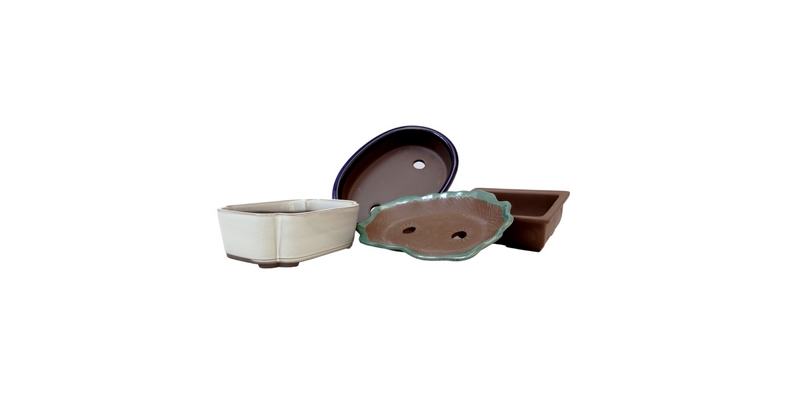
The word Bonsai, consists of 2 characters, which mean "tree in pot", so the importance of the vase in this art, is (almost!) equal to that of the plant.
Similarly, for horticultural and aesthetic reasons, not all trees and bushes can be used in Bonsai, is not any vase that serves for Bonsai.
At the aesthetic level, "the vase is for Bonsai, as the frame for the frame", it should highlight the beauty of the plant, without stealing the attention, different styles of Bonsai require different types of vessels, also the colors are selected taking into account the species and style of the plant, contrasting or combined with it.
Horticulturally, the Bonsai vase has to have certain chemical and physical characteristics that allow the cultivation for long periods of a tree in its interior, these objectives are achieved with the use of high quality grates and specific manufacturing processes.
Chemically the vase cannot react with Bonsai, it must maintain an intimate relationship with it (by which the vessels are never enamelled inside), making the retention and exchange of the nutrients with the plant, but perpetuating the ability to "freeze" them so as not to "salinize" the soil.
Physically Bonsai vases are of great strength, have to endure high thermal amplitudes protecting the roots of plants and at the same time resisting their pressure inside without deforming or leaving.
Are various origins Oriental classics of the vessels of Bonsai today exist ocidental pieces, of a lot of quality, some of highly valued conceptualized ceramists.
Yxing, in China, is the region par excellence of production of ceramics from teapots to Bonsai vases and decoration pieces, this is due to the characteristics of the soils that give the reddish tom clay an excellent texture and finish, even in the models without stained glass.
It is in this area that are produced both the most economical line vases for Bonsai as vases of conceptualized authors, handmade, that present the classic stamp (or stamps) that is the artist's signature.
In Japan there are several areas with characteristics of gres, baking, stained glass and even different design among themselves, being the city of Tokonoma the largest and most known area of production with several centuries of tradition.
As in China, the author vases are highly appreciated being the most valued customized with a stamp (or several) in the underside of the vase.
The elegance of the Japanese vase lines and the originality of the colors give them a very own personality, sometimes with more classic lines, other more modern.
With its own style inspired by nature, they are still produced in Japan (as well as in China or many ceramists in the West also do), the Kurama, see more info in kuramas.
There are other areas in the East that produce vessels such as Corea, or Indonesia, that although they follow lines inspired by Japan and China, they eventually have their own personality.
For more tips on how to choose the vase go repotting technical sheet.
